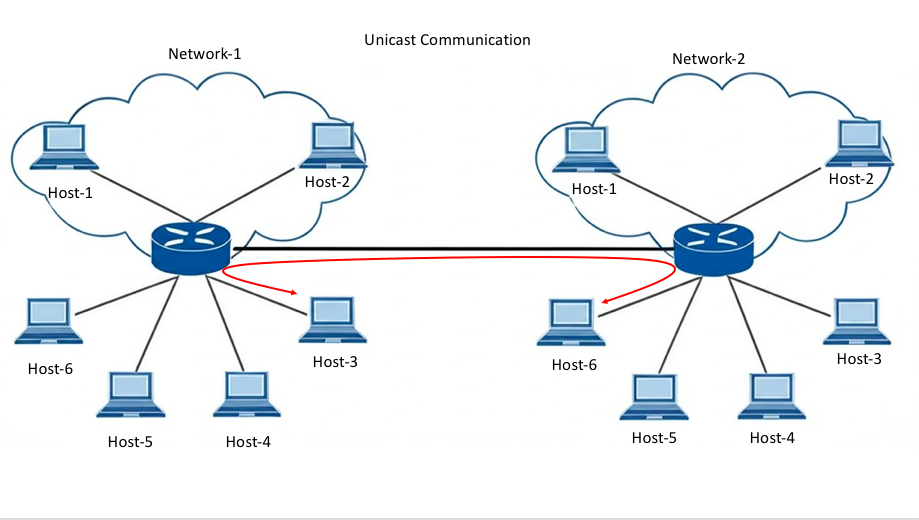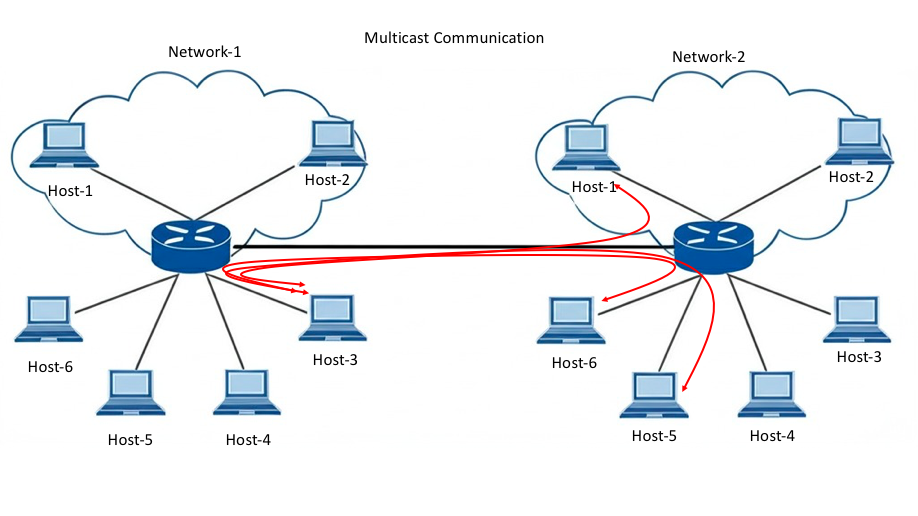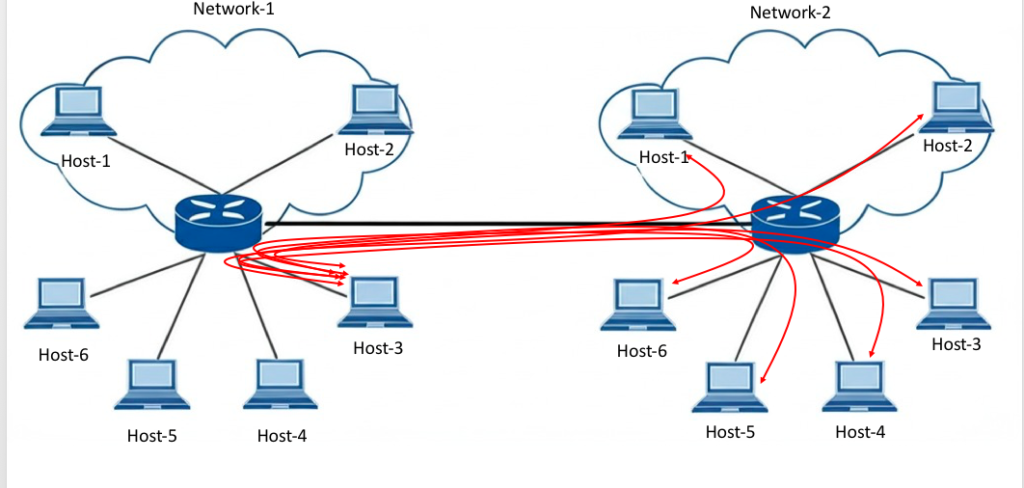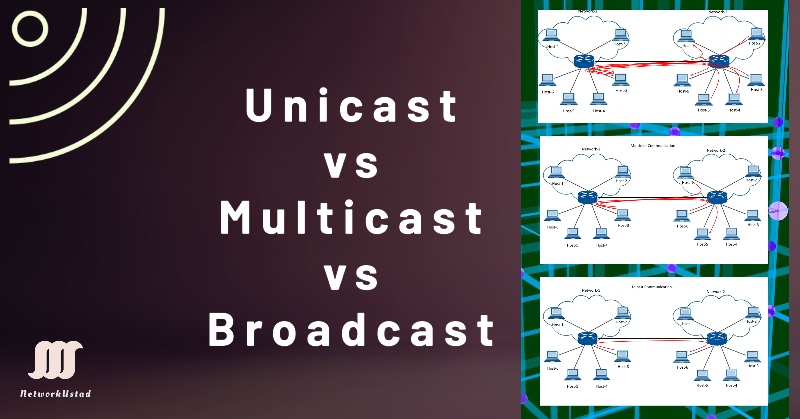Unicast, Multicast and Broadcast Communication
By the end of 2025, global internet traffic is projected to exceed 181 zettabytes, driven by video streaming, IoT devices, and 5G connectivity. Efficient data transmission methods like unicast, multicast, and broadcast are critical to managing this surge. This article breaks down these three communication types, their technical workings, modern applications, and emerging trends shaping networks today.
This article, “Unicast, Multicast and Broadcast Communication,” is the continuation of my previous articles about the IP addresses, which are the following:
Unicast, Multicast, and Broadcast Communication
Mastering Host Address, Network Prefix, Network ID, and Broadcast ID in 2025
IP address Classes- Exclusive Explanation
Positional Number System and Examples (Updated 2025)
Network and Host Portion of IPv4 Address
So, you need to study the above article to understand it better before reading it. If you have already covered the above topics, let’s dive straight into this article.
Unicast: One-to-One Communication
Unicast involves direct communication between a single sender and receiver. Protocols like TCP/IP ensure reliability through the 3-way handshake (SYN, SYN-ACK, ACK). For example, when you load this article, your browser (client) sends an HTTP request to the server, which responds with the webpage data.
Unicast communication occurs between host-to-host over the network. The packet in unicast transmission contains the destination device address as a destination address and can be routed through the Internetwork. There is just one sender and one receiver in unicast communication.
The addresses assigned to two end devices are the source and destination addresses in IPv4 unicast communication. The sending host device encapsulates its IPv4 address as a source host address and the destination host address as the destination address during the encapsulation process. The range of IPv4 unicast addresses is from 0.0.0.0 to 223.255.255.255, but inside this range, many addresses are reserved for special purposes. Remember that any packet’s source address is always the originating host’s unicast address. The figure below illustrates the unicast communication. Host-3 on network-1 and host-6 on network-2 are communicating one-to-one.

Technical Example:
- HTTP/3 and QUIC: Modern protocols reduce latency by combining UDP’s speed with TCP’s reliability, ideal for video-on-demand.
Use Cases
- Video Streaming: Netflix uses unicast to deliver personalized content to millions of users.
- Online Gaming: Real-time updates in games like Fortnite rely on unicast for low-latency communication.
2.3 Pros and Cons
| Pros | Cons |
|---|---|
| Reliable delivery | Bandwidth-heavy for scaling |
| Secure (end-to-end) | High server load |
Multicast: One-to-Many Communication
Multicast is another communication technique used in networking. The data packet is sent from one or more hosts to a group of hosts. There are possibly one or more senders, and the information is distributed to a group of receivers. It reduces traffic by allowing a host to send a single packet to a selected set of hosts that are multicast group members. The IPv4 address range 224.0.0.0 to 239.255.255.255 is reserved for multicasting. The Protocols like IGMP (Internet Group Management Protocol) to manage group memberships. Routers employ PIM (Protocol Independent Multicast) to build distribution trees.
A router connected to the local network knows about the multicast packet destinations. So, the router forwards the packets to the multicast group and never forwards them further. A typical use of the reserved multicast address in routing protocols is to exchange routing information. For example, 224.0.0.5 and 224.0.0.6 are reserved for OSPF, and 224.0.0.9 is reserved for RIP version 2. The figure below illustrates multicast communication.

The multicast client can receive multicast data using client program services. Each multicast group is its own IPv4 multicast destination address. When a host subscribes to a multicast group, the host processes packets addressed to this multicast address and packets to its uniquely allocated unicast address. Some important reserved multicast addresses are the following:-
| 224.0.0.0 | Base address |
| 224.0.0.1 | Reserved for all hosts on the same network segment. |
| 224.0.0.2 | Reserved for all Routers multicast group addresses on the same network segment. |
| 224.0.0.4 | Distance Vector Multicast Routing Protocol (DVMRP) multicast routers address. |
| 224.0.0.5 | Reserved for all OSPF Routers for sending Hello packets to all OSPF routers on a network segment. |
| 224.0.0.6 | Reserved for sending OSPF routing information to designated routers (DR) on a network segment. |
| 224.0.0.9 | The RIP version 2 group address used to send routing information to all RIP2 routers on a network segment. |
| 224.0.0.10 | Reserved for EIGRP group address to send routing information to all EIGRP routers on a network segment. |
| 224.0.0.18 | Reserved for Virtual Router Redundancy Protocol (VRRP) |
| 224.0.0.19–21 | Reserved for IS-IS over IP |
| 224.0.0.102 | Reserved for Hot Standby Router Protocol version 2 (HSRPv2) and Gateway Load Balancing Protocol (GLBP) |
| 224.0.0.251 | Reserved for Multicast DNS address |
| 224.0.0.252 | Reserved for Link-local Multicast Name Resolution address |
| 224.0.1.1 | The RIP version 2 group address sends routing information to all RIP2 routers on a network segment. |
| 224.0.1.41 | H.323 Gatekeeper address |
Technical Deep Dive:
- Source-Specific Multicast (SSM): Restricts receivers to specific sources, enhancing security.
- RPF Check: Prevents loops by ensuring packets arrive via the shortest path.
Use Cases
- Live Sports Streaming: ESPN uses multicast to deliver 4K feeds to millions simultaneously.
- IoT Firmware Updates: Smart cities update traffic lights via multicast to reduce bandwidth strain.
Pros and Cons
| Pros | Cons |
|---|---|
| Bandwidth-efficient | Complex configuration |
| Scalable for large groups | Requires multicast-enabled routers |
Broadcast: One-to-All Communication
In broadcast communication, one host sends a packet to all other hosts over the network. There is only one sender in the broadcast process, but the data is received by all other connected hosts in the network. The source sends data to all hosts in the network using a broadcast address. The broadcast packet contains the destination IPv4 address with all ones in the host portion. All 1s in the host portion mean the whole local network will receive the packet.
Network protocols also use the broadcast technique, such as DHCP. When a host receives a packet sent to the network broadcast address, the host processes this packet as it would a packet received to its unicast address. Another example of the broadcast is Wi-Fi networks, which declare themselves to all nearby wireless devices using a broadcast technique. Wi-Fi broadcasts their SSID to make it easier for users to find a nearby network.
There are two types of broadcast: directed and limited. A directed broadcast sends traffic to all hosts on a particular network. For example, a host on the 200.100.50.0/24 network sends a packet to 200.100.50.255. This is a routable address, so a router would forward it to the end destination gateway if the router is configured to do so. But a limited broadcast is sent to 255.255.255.255. The router will send the traffic received to this address to all other hosts on the local network. 255.255.255.255 is not a routable address, so a router would not route the traffic outside the local network. By default, routers do not forward broadcasts.
Broadcast traffic takes network resources because each host on the network must process the broadcast packet. So, broadcasting affects the network and devices’ efficiency. Therefore, broadcast traffic is limited and does not affect the performance of the network and network devices. Routers discourage broadcasting by default, because each port of the router has separate broadcast domains, subdividing of networks also improve the network’s performance. The figure below illustrates the broadcast communication.

Example of a Broadcast Storm:
Uncontrolled broadcasts can overwhelm networks, but VLANs and storm control protocols mitigate this.
Use Cases
- DHCP Discovery: Devices use broadcast to locate DHCP servers.
- Emergency Alerts: Governments broadcast weather warnings via cellular networks.
Pros and Cons
| Pros | Cons |
|---|---|
| Simple implementation | Wastes bandwidth |
| Effective for LANs | Security risks (eavesdropping) |
Head-to-Head Comparison
Unicast vs Multicast vs Broadcast
| Feature | Unicast | Multicast | Broadcast |
|---|---|---|---|
| Addressing | Single IP | Group IP | All devices |
| Scalability | Poor for large Networks | Excellent | Limited to LAN |
| Protocols | TCP, HTTP | IGMP, PIM | ARP, DHCP |
When to Use Which?
- Unicast: On-demand content (YouTube), secure transactions.
- Multicast: Live events (Zoom webinars), stock market feeds.
- Broadcast: Network discovery (ARP), emergency alerts.
2025 Trends Shaping Data Transmission
Multicast in 5G Networks
5G’s eMBB (Enhanced Mobile Broadband) supports multicast for stadiums. For example, Verizon’s 5G Ultra Wideband delivers live sports to thousands with minimal latency.
IoT and Multicast
Tokyo’s smart grid uses multicast to synchronize 10,000+ sensors, reducing energy waste by 15%.
Cloud-Based Multicast
AWS Transit Gateway now supports multicast, enabling enterprises to stream data across VPCs without re-architecting.
Challenges and Solutions
- Multicast Security: Prevent DoS attacks with ACLs and SSM.
- Broadcast Storms: Use storm control on switches to limit traffic.
Conclusion
Unicast, multicast, and broadcast each serve unique roles in modern networking. As 5G and IoT expand, multicast will dominate live streaming and large-scale IoT deployments. Future advancements may integrate multicast into metaverse platforms for real-time interactivity.
FAQs
-
Unicast communication establishes a direct connection between one sender and one receiver, making it suitable for personalised data transfer like video calls. Multicast allows a sender to transmit data to specific group members, optimising bandwidth in scenarios like online streaming. Broadcast sends data from one sender to all receivers within a network, ensuring all devices get the same information, commonly used in network management tasks. Each method serves unique purposes in networking.
